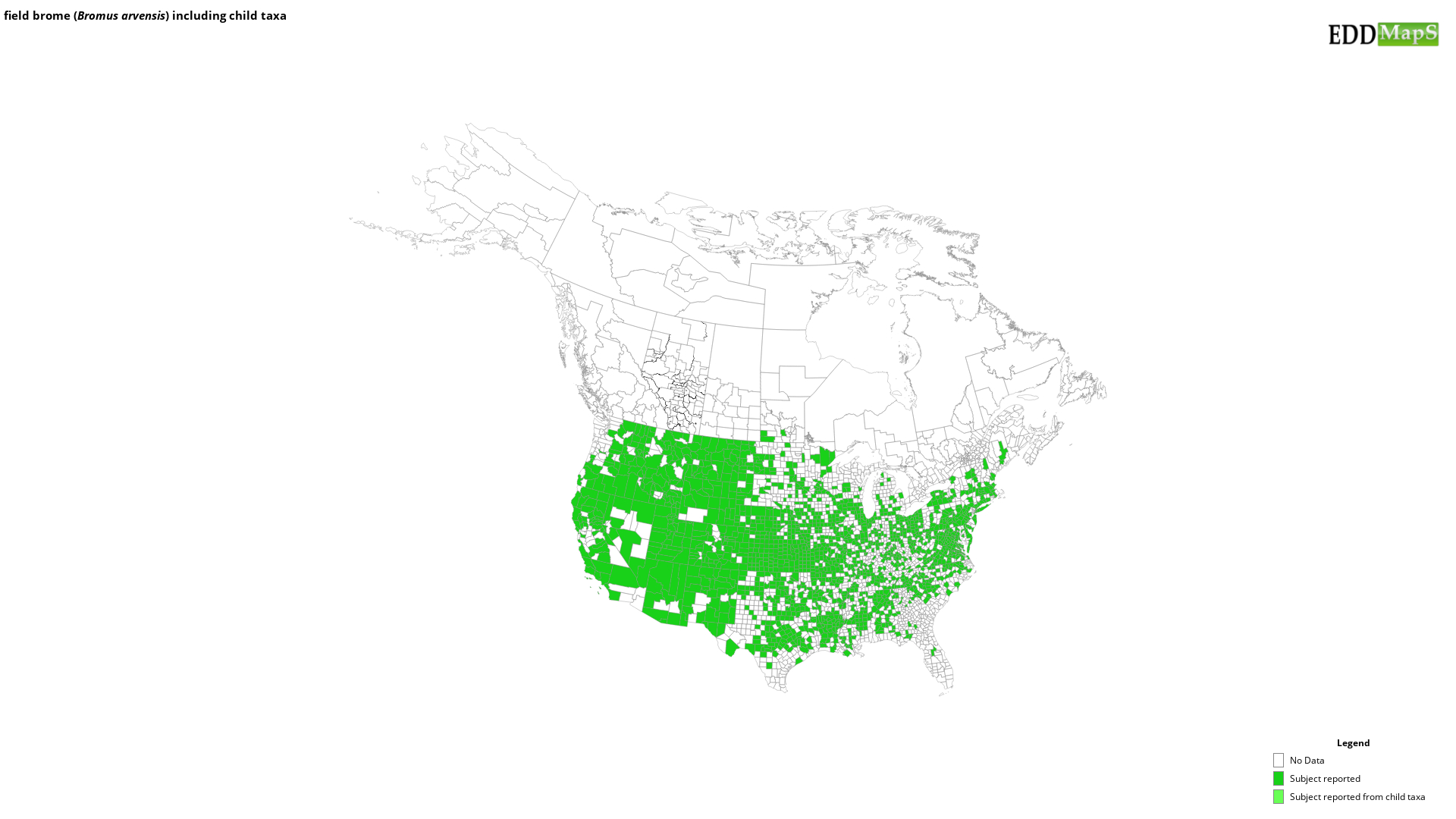field brome
(Bromus arvensis)
This species is Introduced in the United States
Appearance
Bromus arvensis is an annual in the grass family (Poaceae). It is a cool season, annual grass that can range in height from 14-40 in.
Foliage
Leaf blades are flat, covered with soft, distinct, thin hair, approximately 1-8 in. in length, and 1/32-1/16 of an in. wide. Sheaths are covered with dense, soft hairs. Ligules are 1/64-1/16 of an in. long and auricles are absent.
Flowers
Inflorescence is an open panicle, 2-7 in. long with spreading, usually drooping branches. Spikelets are 6 to 10 flowered, 1/2-1 in. in length, and 1/8-1/4 of an inch wide. First glumes are usually 3- to 5- nerved, 1/8-1/4 of an inch long. Second glumes are 5- to 9-nerved and 1/4-1/2 of an inch in length.
Fruit
Lemmas are broader at the upper-half, tapering to the bottom, with margins not strongly enrolled in the fruit. Awns are 1/4-3/4 in. long, somewhat twisted and widely spread at maturity.
Ecological Threat
Bromus arvensis can be found on a wide variety of soils that include sand, silt, and clay, but thrives on fine-textured soils. Waste areas, disturbed sites, roadsides, pastures, rangelands, and wheat fields are areas where Bromus arvensis can establish. The plant is a common component of many mixed prairie communities. It is an aggressive species that out-competes desirable vegetation for water and soil nutrients, thus reducing plant biodiversity. Forage production of perennial grasses and grazing performance is also reduced in areas infested with Bromus arvensis.
Selected Images
Maps
EDDMapS Distribution - This map is incomplete and is based only on current site and county level reports made by experts, herbaria, and literature. For more information, visit www.eddmaps.org
State Lists - This map identifies those states that have this species on their invasive species list or law.
Invasive Listing Sources
- Jil M. Swearingen, Survey of invasive plants occurring on National Park Service lands, 2000-2007
- John Randall, The Nature Conservancy, Survey of TNC Preserves, 1995.
- Kentucky Exotic Pest Plant Council - Moderate Threat
- National Park Service, Mid-Atlantic Exotic Plant Management Team Invasive Plant List
- Nonnative Invasive Species in Southern Forest and Grassland Ecosystems
- WeedUS - Database of Plants Invading Natural Areas in the United States
Taxonomic Rank
| Domain: Eukarya |
| Kingdom: Plantae |
| Phylum: Magnoliophyta |
| Class: Magnoliopsida |
| Superorder: Lilianae |
| Order: Poales |
| Family: Poaceae |
| Subfamily: Pooideae |
| Tribe: Bromeae |
| Genus: Bromus |
| Bromus arvensis |
Other System Links
Plants: BRAR5
Bayer: BROAV
GRIN: 7769
ITIS: 40494
NPDN Pest: PCAATBB
NPDN Host: 36333
References
Common Name Reference: USDA, NRCS. 2010. The PLANTS Database. National Plant Data Center, Baton Rouge, LA, USA.
Scientific Name Reference: USDA, NRCS. 2010. The PLANTS Database. National Plant Data Center, Baton Rouge, LA, USA.


